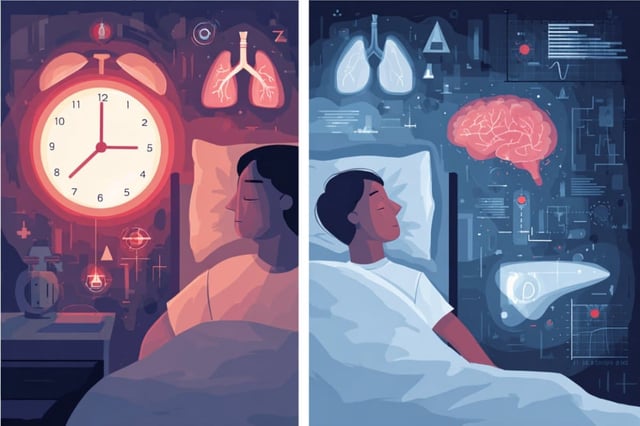Overview
- A June 2025 phenome-wide actigraphy analysis of 88,461 UK Biobank participants found that inconsistent bedtimes and unstable circadian rhythms were linked to elevated risks across 172 diseases.
- Going to bed after 12:30 a.m. was tied to a 2.57-fold higher liver cirrhosis risk, while low interdaily stability corresponded to a 2.61-fold increase in gangrene risk.
- Objective sleep measurements corrected self-report misclassifications, revealing that 21.7% of self-identified “long sleepers” actually slept under six hours and showed no broad health harms from longer sleep.
- Researchers estimated that poor sleep regularity accounted for over 20% of the risk in 92 diseases, with inflammatory markers like leukocytes, eosinophils and C-reactive protein mediating newly identified associations.
- Key links—including those with COPD and type 2 diabetes—were replicated in NHANES, and investigators are now designing causal analyses and intervention studies to see if stabilising sleep patterns can lower chronic disease incidence.



